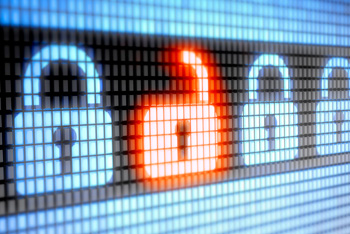April 17, 2013 – According to some estimates, upwards of 90 percent of all discoverable information is produced in electronic form, and will continue to reside in such form indefinitely.
Electronically stored information (ESI) can be found in a wide and growing range of electronic devices, not just cell phones, laptops and tablets, but also in equipment and appliances ranging from passenger cars to bathroom scales to blood pressure testing devices.
These days, many people send dozens of e-mails and text messages a day. Cases with large volumes of ESI are no longer the preserve of the federal courts handling large-dollar cases among corporate behemoths.
 Hon. Edward E. Leineweber, U.W. 1976, formerly Richland County circuit court judge, is of counsel with Bell, Moore & Richter S.C., Madison. He can be reached at eleineweber@bmrlawyers.com.
Hon. Edward E. Leineweber, U.W. 1976, formerly Richland County circuit court judge, is of counsel with Bell, Moore & Richter S.C., Madison. He can be reached at eleineweber@bmrlawyers.com.
 Hon. Richard J. Sankovitz, Harvard 1983, is a Milwaukee County circuit court judge and teaches in the field of electronic discovery. He can be reached at richard.sankovitz@wicourts.gov.
Hon. Richard J. Sankovitz, Harvard 1983, is a Milwaukee County circuit court judge and teaches in the field of electronic discovery. He can be reached at richard.sankovitz@wicourts.gov.
 April M. Southwick, Hamline 1998, is attorney for the Wisconsin Judicial Council, Madison. She can be reached at april.southwick@wicourts.gov.
April M. Southwick, Hamline 1998, is attorney for the Wisconsin Judicial Council, Madison. She can be reached at april.southwick@wicourts.gov.
Courts are beginning to see e-discovery battles waged in family law and even small claims cases, which now have a $10,000 jurisdictional limit. Almost all cases have a significant ESI element, whether we recognize it yet or not.
Now, four new rules,1 which became effective Jan. 1, 2013, will help guide the management and discovery of electronically stored information.
Proposed by the Wisconsin Judicial Council and promulgated by the Wisconsin Supreme Court, the new rules manage the difficulties that arise when privileged communications and trial preparation materials are inadvertently disclosed during discovery, particularly in the course of producing large volumes of ESI.
The rules are modeled on their federal counterparts, Fed. R. Evid. 502 and Fed. R. Civ. P. 26(b)(5)(B), and proposed to enhance the basic rules addressing e-discovery proposed by the Council in 2009 and adopted by the court in 2010.
With this package of e-discovery rules, Wisconsin courts are in a solid position to address the expected tide of e-discovery disputes. Here’s a brief rule introduction.
Inadvertent Disclosure in Discovery
With the large volume of ESI potentially discoverable in even relatively small cases, the cost of conducting a “privilege review” of requested information can quickly become prohibitive, just as it has for larger, more well-heeled litigants in those big federal cases.
The newly-adopted rules provide necessary relief by recognizing that limits may be drawn, and suggesting principles of proportionality that may be considered.
“I was afraid of that! Now what do I do?”
Given the large volume of information that can change hands during e-discovery, mistakes such as inadvertent disclosures are more likely, and so, too, disputes over whether and how privileged information should be returned. The new rules provide courts, counsel, and litigants with an important framework for handling these disputes.
Answer: The New Clawback Rule
The new rules adopt a clawback protocol modeled on the procedure followed in federal courts, which requires parties to preserve inadvertently disclosed materials until a court can rule on whether any privilege has been forfeited by disclosure.
Wisconsin’s version of the “clawback” rule is found in Wis. Stat. section 804.01(7). This rule permits recovery of “information” inadvertently produced in discovery if the procedures detailed in the rule are promptly pursued.
The procedures determine that:
- the party making the claim of privilege must notify the other party of the claim and the basis for it;
- the receiving party promptly must return, sequester, or destroy the specified information, including any copies;
- the receiving party may not make any further use or disclosure of the information until the claim of privilege is resolved;
- the receiving party must take reasonable steps to retrieve the information if disclosed prior to being notified; and
- the receiving party may promptly present the information to the court under seal for a determination of the privilege claim. The producing party is obligated to preserve the information until the claim is resolved.
The amendment to section 804.01(2)(c) makes it clear that the trial preparation materials privilege is not forfeited merely because an inadvertent disclosure of otherwise privileged material has occurred, but rather must be considered under the provisions of newly-adopted section 905.03(5), as if it were a lawyer-client communication. See infra. However, the protection of the privilege is waived if the disclosure is “not inadvertent.”
This clawback rule applies to discovery obtained from third-parties as well. The rule is engrafted onto section 805.07(2)(d), creating the same procedures described concerning inadvertent disclosure of privileged information by parties responding to subpoenas.
Privilege Generally Protected If Careful Procedures Followed: Forfeiture of Privilege to Previously Undisclosed Information
Wis. Stat. section 905.03(5), adapted from Rule 502 of the Federal Rules of Evidence, provides the rule of decision for courts facing claims of privilege concerning inadvertently disclosed information. While addressing “communications” only by its express terms, it applies as well to other information, such as trial preparation materials, pursuant to section 801(2)(c) discussed above.
 This new rule of evidence is comprised of two paragraphs, as follows: Paragraph (a) provides that a forfeiture of the privilege has not occurred if all of the following apply: 1) the disclosure is inadvertent; 2) the holder of the privilege took reasonable steps to prevent disclosure; and 3) the holder promptly took reasonable steps to rectify the error, including, if applicable, following the clawback procedures described above.
This new rule of evidence is comprised of two paragraphs, as follows: Paragraph (a) provides that a forfeiture of the privilege has not occurred if all of the following apply: 1) the disclosure is inadvertent; 2) the holder of the privilege took reasonable steps to prevent disclosure; and 3) the holder promptly took reasonable steps to rectify the error, including, if applicable, following the clawback procedures described above.
If a disclosure results in a forfeiture under par. (a), par. (b) addresses the extent to which other information, previously undisclosed, also loses its privileged status, and is fair game for use by the other party in the proceeding.
For such undisclosed information to be available, all of the following must be found to apply: 1) the disclosure is not inadvertent; 2) the disclosed and undisclosed information concern the same subject matter; and 3) the disclosed and undisclosed information ought to in fairness be considered together.
Note that sub. (5) is not intended to have the effect of overruling any holding in Harold Sampson Children’s Trust v. Linda Gale Sampson 1979 Trust, 2004 WI 57, which holds that a lawyer’s deliberate disclosure, without the consent or knowledge of the client, does not waive the attorney-client privilege.
This is so since, in applying sub. (5)(b) to such a claim, courts are not likely to hold that this information “ought in fairness” be used at trial.
Middle Ground, Balanced Approach Taken
The approach taken by the Wisconsin Supreme Court in promulgating Wis. Stat. section 905.03(5) is said to be the “intermediate,” “middle,” or “balanced” approach taken in the federal rule, as well as in the majority of states that have considered the issue.
While acknowledging that preserving client confidences is a primary duty of counsel, and that the consequences of disclosing otherwise privileged information might be severe, the court also recognizes that in the digital era, with the huge volume of potentially discoverable information, a thorough preproduction privilege review will often be prohibitively expensive. Such an intermediate approach incorporates the notion of proportionality evident in modern e-discovery rules.
Much More Information Available
The Wisconsin Supreme Court, in promulgating these new rules, ordered that the Judicial Council Notes be published as well, so that they “may be consulted for guidance in interpreting and applying the new rule.” The Judicial Council Notes themselves incorporate much of the material contained in the federal Advisory Committee notes, reflecting the Supreme Court’s intention that the developing federal law on this topic should be a guide in resolving these issues under our new rules.
Conclusion
The adoption of these new rules concerning inadvertent disclosure of privileged information completes the second phase of the work the Wisconsin Judicial Council began over five years ago, developing and presenting to the Supreme Court special rules needed for the digital age.
The Supreme Court has now provided Wisconsin lawyers, litigants, and courts with the means to bring a balanced, proportional approach to the resolution of these issues, while in the process maintaining the fairness and effectiveness of our Wisconsin justice system.
Endotes
1 Wis. Stats. §§ 804.01(2)(c), 804.01(7), 805.07(2)(d) and 905.03(5).
